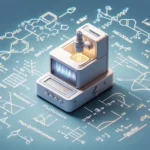UV Visible Spectrometer: How To Understand and Use
Table of Contents
- Introduction and Outcome
- Principle of UV-Visible Spectroscopy
- Beer Lambert Law
- UV spectrum presentation
- UV visible spectrophotometer applications
- Case study: Assay of Paracetamol tablet in formulation
- Advantages of the UV-visible spectrophotometer method
- Disadvantages of the UV-visible spectrophotometer method
- UV spectroscopic terms
- Operation procedure
- Conclusion
- Frequently Asked Questions (FAQ)
Introduction and Outcome
The UV-visible spectrophotometer is one of the traditional Analytical techniques, which is widely used in the pharmaceutical industries for both quantitative(such as assay and content test) and qualitative analysis (such as identification test and to find out wavelength maxima of pharmaceuticals). In this article, I will share skill-based knowledge on applications and principles of UV-visible Spectrophotometer with case studies. After reading this article all your doubts will be cleared and your knowledge will increase to the next level.

Principle of UV Visible Spectrometer
UV-visible spectroscopy is based on the principle that molecules absorb light energy at specific wavelength. When a sample is exposed to UV or Visible light, certain molecules of the sample absorb photon of the light, resulting in decrease in the intensity of the transmitted light. The absorption spectrum of a compound is unique to its chemical structure, allowing for identification and analysis.
The following are the UV-Visible range:
- UV-Visible range: 200 nm to 800 nm
- UV range: 200 nm to 400 nm
- Visible range: 400 nm to 800 nm
Beer-Lambert Law
Transmittance (T) is calculated by the following formulae:
T=10-ε.c.l
Where: T is the transmittance, ε is the molar absorption coefficient and l is the pathlength
The following is the relationship between transmittance (T) and absorption (A):
A(Absorbance)= -Log T or A =ε.c.l
or Absorbance(A) = (molar absorption coefficient) x (concentration) x (pathlength)
Beer-Lambert law states that the absorbance of a solution is proportional to its concentration. molar absorption coefficient and optical path length.
This equation is very helpful and widely used in the industries by Analytical Scientists. This instrument is used to measure the intensity of the light before and after passes through the sample. This instrument provides reading in terms of transmittance (T) and absorbance (A). Transmittance is the ratio of the intensity to the transmittance light to the intensity of the incident light, express as percentage absorbance. Absorbance is the logarithm of the reciprocal of transmittance and is directly proportional to the absorbing species in the sample.
UV Spectrum Presentation
UV spectrophotometer provides the data in the form of an absorption spectrum. The absorption spectrum is normally presented in the form of graph, where the y-axis represents the absorbance, and x-axis represents the wavelengths. Peaks in the spectrum is known as the absorption peaks, indicate the wavelength of light that is absorbed by the sample. The following is the typical representation of the UV spectrum:
Single Beam and Double Beam UV Visible Spectrophotometer
In UV-Vis spectrophotometry, single-beam and double-beam spectrophotometers are two common types of instruments used to measure the absorbance or transmittance of light by a sample in the ultraviolet and visible regions of the electromagnetic spectrum.
Single Beam UV Visible Spectrophotometer
One beam of light is directed through the sample and then the detector. The same beam is used for both the sample and the reference. The light source, sample, and detector are part of a single optical path. A typical procedure involves measuring the reference first, then switching to the sample, and manually compensating for any variations.
Double Beam UV Visible Spectrophotometer
Two beams of light are used: one directed through the sample and the other through a reference (usually air or a blank). A beam splitter divides the light from the light source into two beams – one that passes through the sample and one that passes through the reference. The detectors for each beam are often located side by side, allowing continuous monitoring of both the sample and reference simultaneously. This setup allows for real-time comparison of the sample and reference, providing more accurate and stable measurements.
Difference between Single Beam and Double Beam UV Visible Spectrophotometer
The following are the main differences between single beam double-beam UV Visible Spectrophotometers:
| Feature | Single Beam UV-Vis Spectrophotometer | Double Beam UV-Vis Spectrophotometer |
| Measurement Method | One beam for both sample and reference | Two separate beams for sample and reference |
| Stability | Can be affected by fluctuations in light source and drift | More stable, real-time comparison of sample and reference |
| Precision | Lower precision, manual adjustments required | Higher precision, continuous monitoring |
| Cost | Less expensive | More expensive |
| Complexity | Simpler, fewer components | More complex, more components |
Applications of UV Visible Spectrometer
The following are the different applications of UV-visible spectrophotometer:
- Quantitative analysis
- Qualitative analysis
- HPLC method development
- Drug formulations studies
1.Quantitative analysis
UV-visible spectrophotometer is used for quantitative analysis such as assay testing, content testing and purity testing of pharmaceuticals
2. Qualitative analysis
The UV-visible spectrophotometer is used for qualitative analysis such as identification test (by comparing wavelength maxima of standard solution) and purity tests such as transmittance test and absorbance test
3. Chromatographic method development
The UV-visible spectrophotometer is used to find out the wavelength maxima of pharmaceuticals during the HPLC method development. It is very helpful in deciding the HPLC operating wavelength.
4. Drug formulations studies
The UV-visible spectrophotometer is used to find out content of uniformity test, dissolution test and assay test during Drug formulations studies
Case study: Assay of Paracetamol tablet in formulation
Paracetamol is one of the well-known medicines, which is analgesic and antipyretic. One of the methods of performing the assay of paracetamol is the UV-visible spectrophotometer. In this method, a sample solution and standard solution of paracetamol is prepared and the UV absorbance of each standard and sample is taken at 243 nm. The Assay is calculated using the UV absorption of standard solution and sample solution and their respective weights.
Advantages of the UV-visible spectrophotometer method
The following are the advantages of the UV-visible spectrophotometer method:
- Fast analysis
- Low cost analysis
- No need of special skill is required for the UV-visible spectrophotometer method
Disadvantages of the UV-visible spectrophotometer method
It is not a specific method and can not be used for impure compounds
UV Spectroscopic terms
The following spectroscopic terms are widely used during the method development:
Chromophore
Chromophores is a groups of atoms responsible for UV-Visible absorption of the molecules such as C=C, C=O, N=N and aromatic rings.
Redshift
Redshift is the change in absorption to a longer wavelength
Blueshift
Blueshift is the change in absorption to a shorter wavelength
Operation procedure of UV Spectrophotometer
- Set the measurement parameter required for the analysis, such as wavelength scan range and photometric recording range
- Set the wavelength scan speed
- Perform baseline correction
- Place the cuvette containing blank reagent into both sample and reference cells of the sample compartment.
- Select baseline correction from the screen
- After baseline correction is finished, replace the blank reagent with the sample solution for the sample cell
- Start to perform the spectrum measurement
- The spectrum measured is being displayed on the measurement screen
Conclusion
The UV-visible spectrophotometer technique plays a vital role in the pharmaceutical industry for qualitative and quantitative analysis. I hope this articlehas clarified all your doubts and that you can now use it effectively in pharmaceutical development. Write your opinion or suggestions in the comment section.
You may also want to check out other articles on my blog, such as:
- How to calibrate KF?
- How to calibrate GC?
- How to calibrate a UV spectrophotometer?
- How to calibrate FTIR?
- How to perform calibration of pH meter?
- How to calibrate KF apparatus?
- How to perform verification of analytical balance?
- How to calibrate UPLC?
- How to calibrate HPLC?
FAQs
Which type of samples are analyzed by UV spectroscopy?
The compounds having UV absorption can be analysed by UV spectrophotometer such as acetone, toluene, naphthalene, benzoic acid, phenol, paracetamol etc.
What is chromophores?
Chromophores is a groups of atoms responsible for UV-Visible absorption of the molecules such as C=C, C=O, N=N and aromatic rings.
What is Redshift?
Redshift is the change in absorption to a longer wavelength
What is the blue shift?
Blueshift is the change in absorption to a shorter wavelength
What is the effect of solvents on UV Maxima?
The solvent used for the sample diluent should not have UV absorption. For example, if any compound has a maxim at 220 nm then acetone can not be used as a sample diluent. Solvent like water, methanol and ethanol can be used.
What are the different applications of UV spectroscopy?
UV spectroscopy plays an important role in pharmaceutical development due to its simplicity, fast results and cost-effectiveness. It is used for Quantitative analysis, Qualitative analysis and HPLC method development
What are the limitations of UV spectroscopy?
UV spectroscopy has several limitations such as it is not a specific method, it can not be used for impure compounds and it can not be used for compounds having no UV response.
What is the difference between IR spectroscopy and UV spectroscopy?
FTIR spectroscopy uses a longer, lower-energy wavelength range, typically 4,000 to 400 cm-1 (2,500 to 25,000 nm. UV-Visible spectrophotometers are used between 190 to 900 (UV to visible)
What is UV spectroscopy?
UV-visible spectroscopy is based on the principle that molecules absorb light energy at specific wavelength. When a sample is exposed to UV or Visible light, certain molecules of the sample absorb photon of the light, resulting in decrease in the intensity of the transmitted light. The absorption spectrum of a compound is unique to its chemical structure, allowing for identification and analysis
What is the basic principle of UV visible spectroscopy?
The UV-visible spectrophotometer works by passing a light beam through a sample to measure the light intensity of a sample. The sample must have UV absorption. The compounds containing functional groups such as C=C, C=O, N=N and aromatic rings are analysed by uv-spectrophotometer.
References
Abbreviations
- UV: Ultraviolet
- nm: nanometer
- T: Transmittance




 Previous Post
Previous Post
Discussed in details. All doubts cleared. Thanks Sir!
Defination of Redshift and Blueshift is same? Please correct
Thanks a lot, Sarika. I have corrected this typo error.